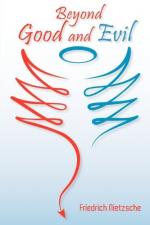
|
| Name: _________________________ | Period: ___________________ |
This test consists of 5 multiple choice questions, 5 short answer questions, and 10 short essay questions.
Multiple Choice Questions
1. The author laments that the theories of his time have come to reach what point in their lives?
(a) Evening.
(b) End.
(c) Afternoon.
(d) Mid-morning.
2. Through a monstrous mix of races, the German people have become all but which one of the following?
(a) Incalculable.
(b) Confused.
(c) Contradictory.
(d) Frightening.
3. Nietzsche talks about two kinds of moralities that are prevalent on earth; they are subtle and _____ moralities.
(a) Blatant.
(b) Coarse.
(c) Flagrant.
(d) Non-existent.
4. What is a part of all types of society, despite their advancement or lack thereof?
(a) Murder.
(b) Crime.
(c) Faith.
(d) Exploitation.
5. Nietzsche points to the various German factions, including the Christian romantic movement and others including which of the following?
(a) Anti-Polish.
(b) Anti-American.
(c) Anti-French .
(d) Anti-Jewish.
Short Answer Questions
1. _________ are becoming more similar to one another as they become more detached from the origins of race and class.
2. What will take place when new friends arrive?
3. Industrious cultures find it difficult to partake in what pastime?
4. Nietzsche refers to the "new European" as being what?
5. Which philosopher is referenced in this section in regard to creativity versus morality?
Short Essay Questions
1. Nietzsche asks if there is a name for those who are no longer friends. What has changed about the friendships?
2. What is the mood in the beginning of the poem? What is the author doing?
3. How does Nietzsche view faith versus knowledge? To what philosopher does Nietzsche refer?
4. Why must a psychologist take care when investigating various people?
5. What happens once the friends arrive in the summer garden? How do they greet the author?
6. How do the virtues of the modern man compare to those of old?
7. What is Nietzsche's lament regarding the German soul?
8. The author comments upon tempo and how it can be improperly translated. What is the danger in it?
9. What are the dangers in the potential development of a budding philosopher?
10. What is the danger in the evolution of the democratic movement in Europe?
|
This section contains 668 words (approx. 3 pages at 300 words per page) |

|




